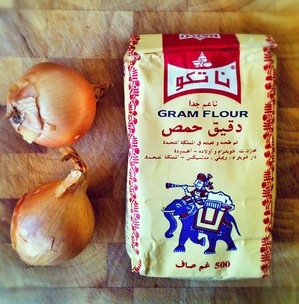Curry Nights
I'm not sure when my love of all things Indian started, was it the folk tales read to me as a child or the stories my mother told me of an early love affair with an Indian prince? Perhaps my fascination took root in rare family meals out in the local tandoori house or when 'O' level history sparked the start of political interest and Gandhi's fight for civil rights brought me to tears? Maybe it's my 70s childhood and dabbling in yoga? Whatever, I have always loved the lure of the exotic and India remains high on my list of 'must visit' places. Amongst my obscenely large collection of cookery books I have a substantial number specialising in food from the region and have been on a couple of cookery courses led by a local teacher, whose recipes have become pretty much standard regulars at home. I also have access to the wonderful Indian Spice Shop, in Drummond Street, on my way home from work. I recommend a visit here if you can, it's an Aladdin's cave of spices, pastes, jars, sacks and crates from the Southern hemisphere and you will not leave empty handed. During younger days, Saturday nights were invariably spent in the local curry house or at home eating a takeaway and so the tradition of 'curry nights' was born.
I do like my curries quite spicy but prefer to be able to taste the individual spices rather than obliterate my taste buds with chilli heat, however, there is a lot of difference in the available varieties and the more you cook with chillies the more you use (and there are always plenty in my kitchen). A particular favourite recipe is a Sindh mung bean dhal which I have posted about before and I often combine this with a different curry, together with rice and/or a chapatti. The dhal is simply husked mung beans cooked with a little turmeric, ground coriander, 12 curry leaves, two chopped tomatoes, a whole green chilli (slit down one side to allow a little heat to escape) and asofoetida (a very pungent spice which is quite hard to get hold of but adds something so essential and is rumoured to help digestion) until soft and finished with a clove or two of garlic fried in a little oil with a spoonful of cumin seeds (add salt to taste).
Lately I have been experimenting with spice blends and pastes using some of the more exotic ingredients sourced on my shopping trips. The one pictured below is a Black Maharashtran Masala from Anjum Anand's wonderful book 'Anjum's New Indian'. This spice mix features coconut, caraway and star anise amongst the other more usual curry spices and is wonderfully fragrant. The seeds you see in the jar are sesame seeds and as well as adding flavour, help thicken the curry too.
Using a recipe from another Anjum Anand book (Indian Food Made Easy) I made a green coriander spice paste which I used for a chicken curry but would be equally delicious as a vegetarian recipe. The resulting curry is a very green and rather summery. Coriander is one of my all time favourite herbs and the kitchen windowsill is full of plants during the summer months. The seeds this time are white poppy seeds and add a light 'nuttiness' as well as thickening the sauce.
As well as shopping for different spices I also search out unusual flours too and they are often much cheaper than buying those labelled gluten free in specialist health shops. Rice and chestnut flour are easy to come by as well as the more usual gram flour and cost just pence. Having always enjoyed the spicy lentil cake 'ondwha' or 'ondwho' when brought in by work colleagues I bought a sack of gram flour to make my own. It's great as a savoury snack with a cold beer or two and is vegetarian (vegan if you use soya yoghurt).
My version of 'Ondhwa' (savoury lentil cake)
100g gram flour
100g brown rice flour
100g natural yoghurt
150ml warm water
1 tsp salt
2 medium sized potatoes, grated
4 tbsp rapeseed oil
juice of half a lemon
1 tbsp bicarbonate of soda
1 tbsp unrefined caster sugar
1 tsp chilli powder
1/4 tsp turmeric powder
2 green chillies, chopped (with seeds)
1 inch piece of ginger, peeled and grated
handful of coriander, with stems, chopped
Tempering
1 tsp yellow mustard seeds
1 tsp sesame seeds
1 tsp kalongji seeds (onion seeds)
1/2 tsp asofoetida (there is no substitute for this but do try and get some)
3 cloves
1 cinnamon stick, broken up a little into shards
4 tbsp rapeseed oil
Mix the flours, turmeric, salt, water and yoghurt together and leave to ferment at room temperature overnight. The next day add the grated potato, chilli, ginger, coriander, lemon juice, chilli powder and bicarbonate of soda and mix well and pour into a well greased 22 cm sponge tin. Prepare the tempering by heating the oil and when hot adding the mustard and kalongji seeds, cloves, cinnamon and asafoetida until the mustard seeds pop, followed by the sesame seeds and frying carefully until a little toasted. Pour the oil and spice mix over the batter and bake for 30-40 minutes at 200 degrees Celsius. Allow to cool before cutting into wedges or squares. Store in a tin somewhere cool and it will keep for a few days.









Comments
Post a Comment